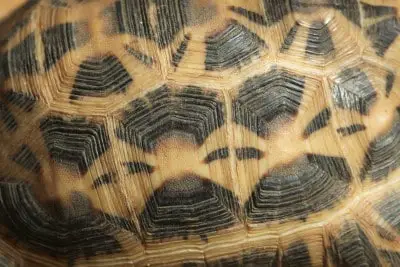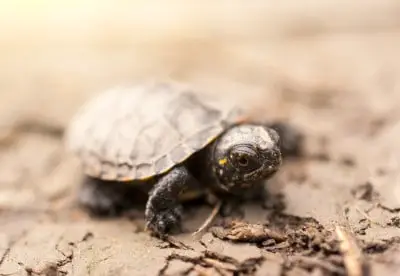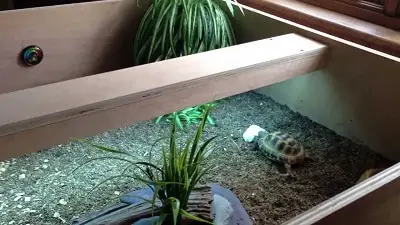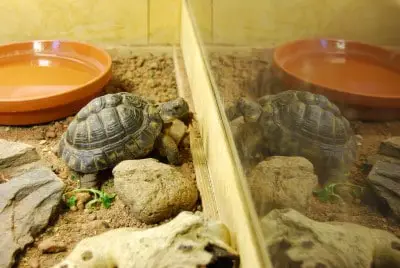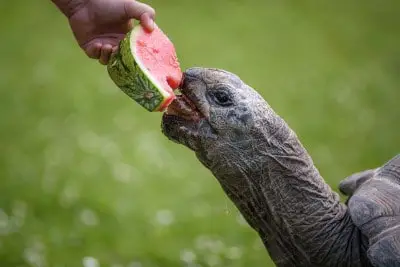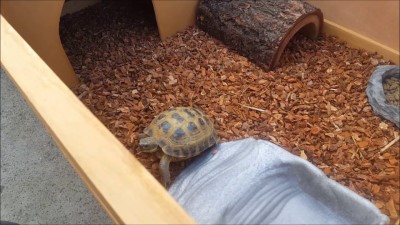You must have come across a tortoise helplessly lying on its back, with no hope of ever getting back up. It happens quite often whether they are in the wild or domesticated. A tortoise owner can quickly flip them back over, but the problem comes when the owner is away or when the tortoise is alone in the wild.
A tortoise can get back on its feet after rolling over, but it may be tasking. It depends on certain factors such as the tortoise’s shape, shell size, and weight. If the shell is round and the tortoise is strong enough, it can use its limbs and skills to turn back up.
As a tortoise-pet owner, your worry may be what will happen to your tortoise when it flips over and you are not around to help. Read on as we tell you how it can find itself on its back and how you can prevent it from happening.
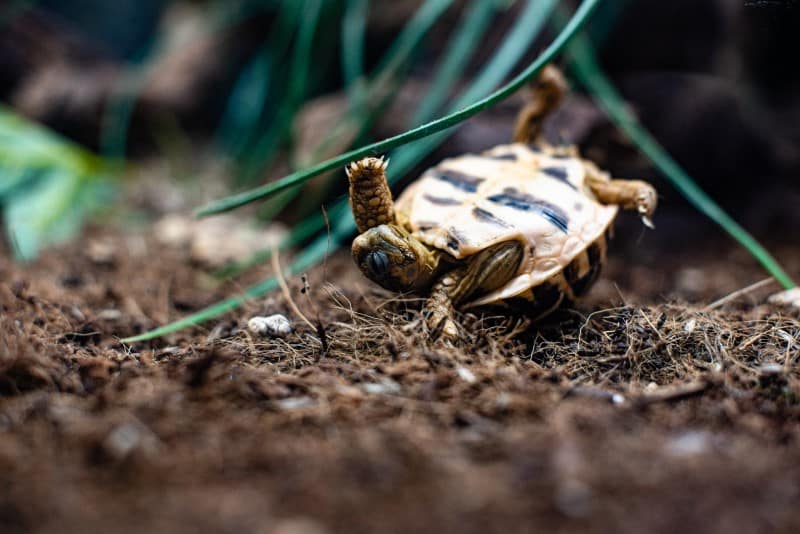
How Do Tortoises Turn on Their Backs?
You may wonder how your tortoise can flip itself over. Sometimes, you may only bump into it already in that state, not knowing what transpired or how long they’ve been like that. The following are some instances where a tortoise can end up on its back.
A tortoise may turn over while climbing a barrier when strolling around their enclosure. If it gets bored staying in the same place, their curiosity may lead them to climb over walls and other surrounding features. It is also common for them to stumble upon flip hazards such as hills and plants. Secondly, other animals in the cage or outsiders may turn them over.
Also, male tortoises tend to fight to show dominance, and in such instances, one may find itself on its back. Other pets in the house can also be to blame, as they are fond of turning them over when trying to play.
Tortoises are not exceptional climbers. Often, they stumble and fall, most times landing on their backs, given their stature and lack of speed or agility. Another reason for the flipping may be due to other males in the enclosure. Male tortoises are territorial animals; hence, they always want to prove dominance by fighting.
The surest way to ensure that the other tortoise is subdued is by turning it over. Therefore, most fights end with one tortoise lying hopelessly on its back. Surprisingly, other tortoises are in the habit of flipping themselves over. It is difficult to explain why they do it, but probably, they may find it exciting to flip and later turn back on their feet.
How To Stop Tortoises From Turning on Their Backs
It is advisable to place a turned-over tortoise back on its feet as soon as possible. However, it may happen even when you are not around. To help, you need to put in place measures to prevent it, thus ascertain that they won’t keep turning over, especially when you are not around to help.
First, you can get rid of objects in their enclosure that they are likely to climb over, such as deep dishes and high furnishings. If you switch to shorter objects, opt for a shallow water dish, your tortoise won’t topple over while trying to climb.
Secondly, you can turn the sharp corners in their enclosure blunt by placing an object; this way, it will be easier for your tortoise to climb. If the flipping occurs due to frequent fights between males, you can separate them and only let them mingle under your watch. On the contrary, if it’s in your tortoise’s nature to flip over, it may be harder to prevent it from happening. Remember, a tortoise with a flatter shell may find it more difficult and rely on the owner or other tortoises. Therefore, you may have to find out why they keep doing it and find methods to stop them.
To assist your pet, you first need to understand why it does it. You can closely watch it or place a camera in its enclosure when you are away. With this, you will know the cause of the frequent flipping and come up with amicable solutions. If your tortoise is the exploring type, you can eliminate the climbing hazards and make the walls around their enclosure easy to climb over. On the other hand, if you have males living together, it is wise to watch out for the fights that end up with them turned over. Unless you separate them, these fights might end up lethal.
What Happens To a Tortoise When It Turns Over?
Tortoises are meant to remain upright, with their shells upright, acting as armors. Their organs are also designed to stay in the right position. If you flip a tortoise over, it will be stressed due to several changes in its body.
They will start to panic, wiggling around to get back up since they know that they are vulnerable in the new position. The bodies will also be affected by the sudden change. The intestines may twist, affecting bowel movement, which is dangerous to the tortoise’s health. Similarly, the organs will press upon the lungs. The position will make the tortoise nauseous; if it vomits while still in the position, it may be susceptible to choking and other respiratory issues. Flipping over also makes the tortoise prone to sunburn, predators, dehydration, and starvation.
If you find out that your pet has been upside down for a long time and you have noticed some changes, it is best to call an expert-vet for help. It may be stressed and may suffer from health-related concerns. If it remains in that state for a long time, it can also turn fatal. With rearranged organs, their bodies may fail to function correctly and lead to suffocation and other issues. Being in this position, the tortoise cannot eat, drink, or escape predators.
Similarly, it becomes difficult for it to move away from unpleasant conditions such as extreme heat. It may also die from a predatory attack, given that it loses the protective advantages of its shell. However, how vulnerable a tortoise is while in the state depends on its age; juvenile tortoises may die faster than adult tortoises.
Can Tortoises Turn Themselves Over?
It is best to overturn a tortoise whenever you find it upside down; otherwise, it may end up being fatal. A tortoise in such a state is practically fighting for its life; hence, it needs to get back up, even if it means doing it independently. With evolution, the reptiles have devised means to turn themselves over when in the wild; let’s look at some of the techniques they use.
Tortoises can turn right side up. It’s a fete that may take some time to achieve, but eventually, they can land back. Others are also skilled enough to do it using a slight turn and some kicks. However, this ability to right themselves depends on their shape, shell size, and general health. The rounder the shell, the easier it is for the tortoise to turn over, but a flatter shell makes it nearly impossible.
The tortoise twists while moving its limbs, making the neck and head follow. When the tortoise is tall, it will effortlessly flip back up thanks to its long neck, which stretches and acts as a pivot to roll it up. Tortoises with dome-shaped shells have the same merits as tall tortoises. They can use their head and legs to grasp a pivot and quickly turn back better than a flat shelled tortoise.
Tortoise self-righting may not be sure, especially when the surface is smooth and flat. Such surfaces don’t have the grip needed to stay still and turn back. As long as the tortoise lacks something to hold its shell while it’s trying to get up, there will be no pivot, making the entire process nearly impossible. Researchers have also established that more giant tortoise species with large shells cannot easily topple on their backs since they are more stable.
The argument is that they are too heavy to roll over onto their backs, and in the rare case that it happens, they can quickly get back up. Their weight is majorly distributed on their belly and lower body, enabling them to tilt easily, providing the limbs and neck great power to push off its back and turn right. Notably, tortoises can help each other get back up. If you keep many of them in the same enclosure, they can instinctively help out when one of them rolls on its back. Male rivals, however, may not help each other; the other may even want the turned tortoise to remain in that state.
Finally
It may be alarming to find your tortoise lying upside down. The first thing to do is to turn it over then assess whether it’s injured. If you don’t notice any physical changes, you can let them be. However, it may have some internal health issues; hence, a vet can attend to it.
The best way to help is to prevent it from rolling over; this way, you will be sure that they are safe even when you are away. You can even place a camera in their enclosure to be safe. The good news is a tortoise can turn itself over even without your help. Tortoises can also help each other roll back over.

